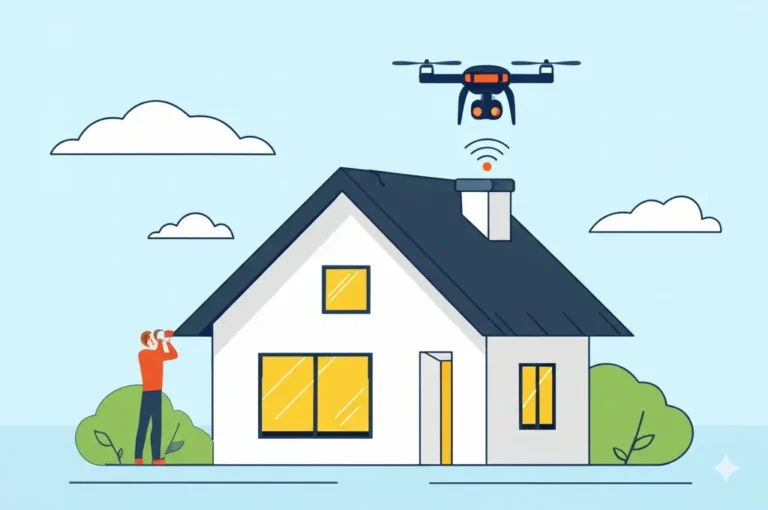In the U.S., dirty solar panels can waste 50–50–150 annually in lost energy savings, especially in sun-rich states like California, Arizona, or Texas. Cleaning your rooftop solar panels isn’t just about efficiency—it’s about safety, protecting your investment, and complying with local guidelines. Here’s how to do it right, tailored for American homes. Check our DIY Roof Inspection Guide to check for roof damage before cleaning.
When to Clean Solar Panels
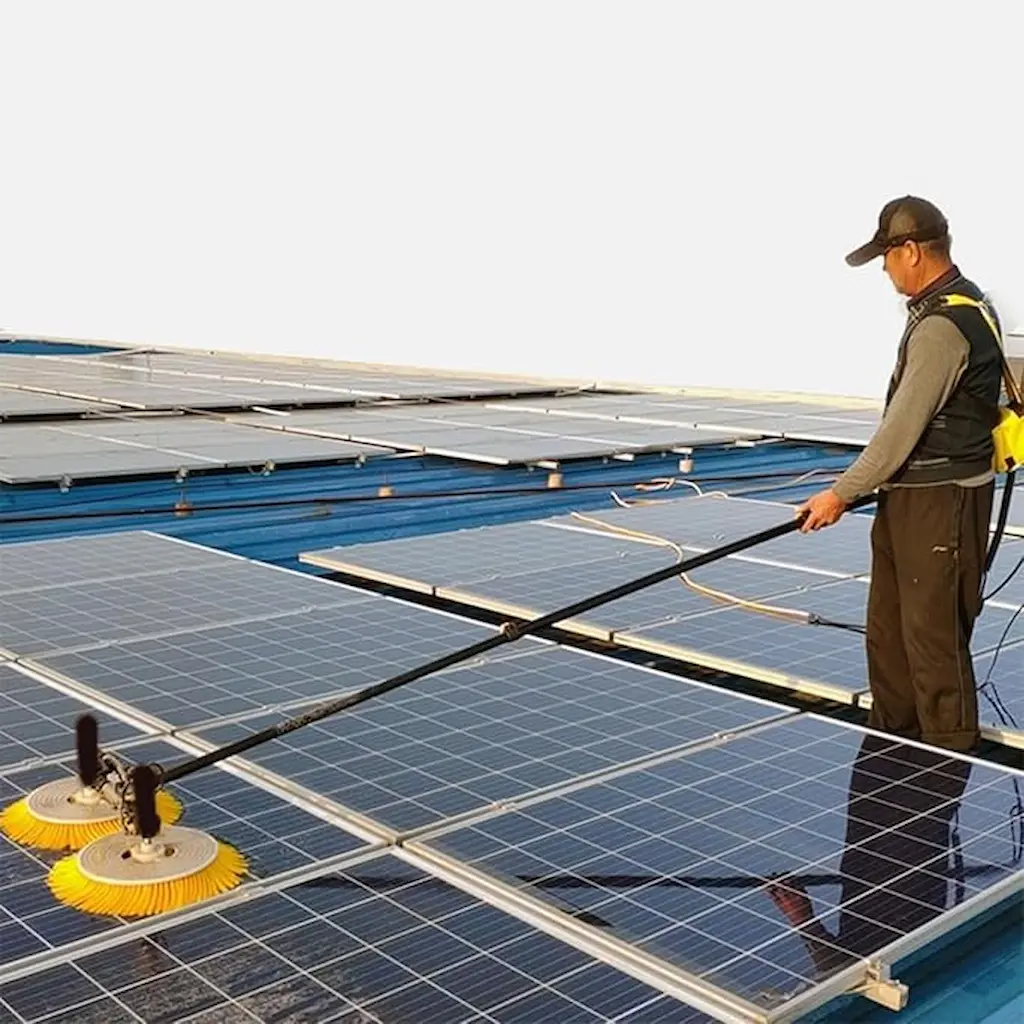
The frequency of cleaning depends on several factors, including your location, climate, and the tilt of your solar panels. Here’s what to consider:
- Location and Climate: In rainy regions like the Pacific Northwest (e.g., Seattle or Portland), solar panels often stay clean due to natural rainfall. However, in drier climates or areas with high pollution, such as desert regions (e.g., Arizona or Nevada) or urban areas with heavy traffic (e.g., Los Angeles), cleaning may be necessary more frequently (Sunsave).
- Panel Tilt: Panels with a steeper tilt (e.g., 15-30 degrees) are more likely to shed dirt and debris naturally. Flat or low-tilt panels (less than 5 degrees) may require more frequent cleaning as dirt accumulates more easily (Sunrun).
- Surrounding Environment: If your home is near construction sites, busy roads, or has nearby trees, your panels may get dirtier faster due to dust, pollen, or leaves.
As a general rule, clean your solar panels at least once every six months, but adjust based on your environment. For example, in arid regions, you might need to clean quarterly, while in wetter areas, annual cleaning may suffice, Read Storm Damage Roofers if panels are affected by hurricanes or hail..
Table: Cleaning Frequency by Region
| Region | Climate | Recommended Cleaning Frequency |
|---|---|---|
| Pacific Northwest | Rainy | Once a year |
| Southwest (e.g., AZ, NV) | Dry, dusty | Every 3-6 months |
| Urban Areas (e.g., LA) | Polluted | Every 6 months |
| Midwest | Mixed | Every 6-12 months |
How to Clean Solar Panels: DIY Methods
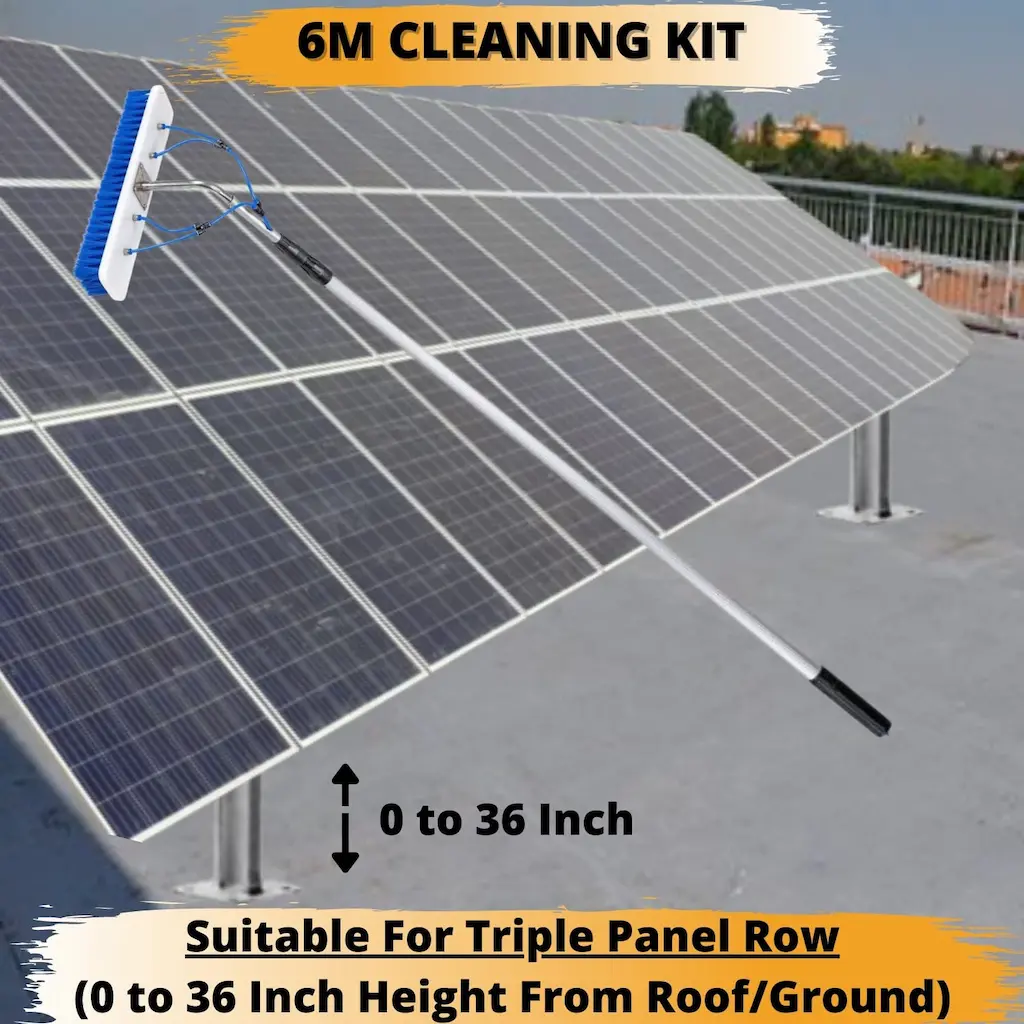
If you decide to clean your solar panels yourself, follow these steps to ensure safety and effectiveness:
- Safety First: Never clean solar panels while they are energized. Turn off the solar system if possible (consult your system’s manual for instructions). If you need to access the roof, use proper safety equipment like a harness, non-slip shoes, and a stable ladder. Ideally, clean from the ground to minimize risks (Forbes).
- Tools Needed:
- A soft-bristled brush or sponge (long-handled for ground cleaning)
- A hose with a gentle spray nozzle
- Mild, eco-friendly soap (optional for stubborn stains)
- Cleaning Process:
- Rinse the panels with water to remove loose dirt.
- If necessary, use a soft brush with soapy water to gently scrub away stubborn stains like bird droppings or hard water deposits.
- Rinse thoroughly to remove all soap residue.
- Avoid using high-pressure washers, as they can damage the panels’ delicate surfaces
- Ground Cleaning: For safety, try to clean from the ground using a long-handled brush or hose. This is especially important for multi-story homes or steep roofs .
Important Note: Always check your solar panel manufacturer’s guidelines before cleaning, as some panels may have specific cleaning recommendations. For example, some manufacturers warn against using certain soaps that could leave residue.
Best Times for Cleaning
- Season: Spring and fall, when temperatures are mild.
- Time of Day: Early morning or late evening to avoid hot panels, which can cause water to evaporate quickly and leave streaks .
Professional Cleaning Services
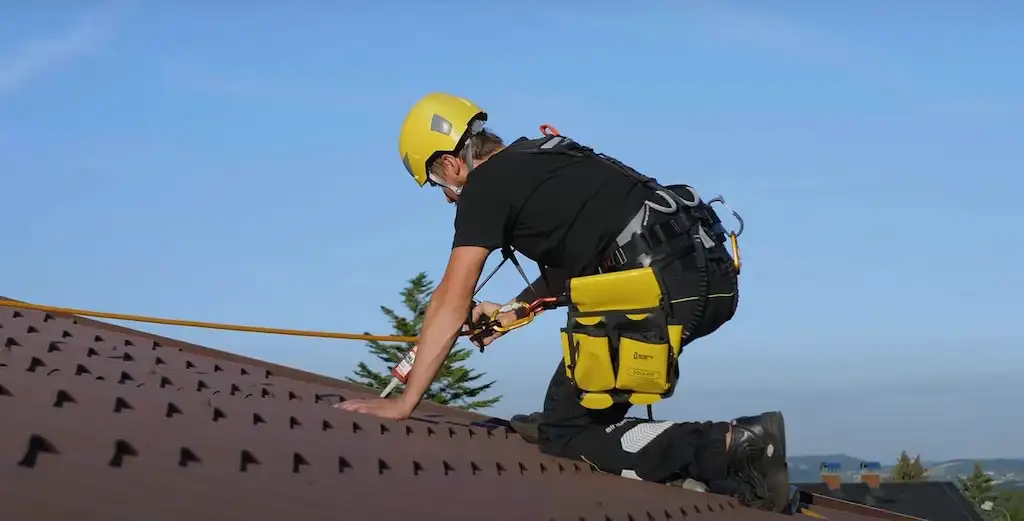
Hiring a professional to clean your solar panels can be a safer and more efficient option, especially if your panels are on a high or hard-to-reach roof. Here’s why and what to expect:
- Benefits of Professional Cleaning:
- Experts know how to safely access and clean solar panels without risking damage.
- They can perform additional maintenance checks, like inspecting for wear, damage, or electrical issues.
- Professional services often include warranties for their work.
- Cost: In the USA, the average cost for professional solar panel cleaning is between $150 and $500 for residential systems, depending on the size of the system and location. A typical 15-20 panel system might cost around $250-$350).
- Choosing a Service: Look for companies with experience in solar panel cleaning, such as those affiliated with solar installers like Sunrun or Sunnova. Ensure they follow safety protocols and use manufacturer-approved cleaning methods .
To help you decide whether to tackle solar panel cleaning yourself or hire a professional, consider the following:
| Criteria | DIY Solar Panel Cleaning | Professional Solar Panel Cleaning |
|---|---|---|
| Safety | Higher risk of falls and injuries | Professionals trained for safe work at heights |
| Cost | Lower upfront cost | Higher cost |
| Convenience | Requires personal time and effort | Saves time and effort |
| Expertise | Relies on homeowner’s knowledge and skill | Professionals have specialized knowledge and experience |
| Equipment | Requires homeowner to purchase or rent equipment | Professionals have all necessary specialized equipment |
| Warranty | Risk of damage and voiding warranty due to improper methods | Professionals aware of warranty requirements and safe methods |
| Time Commitment | Time-consuming process | Quick and efficient service |
Table: DIY vs. Professional Cleaning
| Aspect | DIY Cleaning | Professional Cleaning |
|---|---|---|
| Cost | Minimal (water, soap) | $150-$500 |
| Safety | Higher risk if on roof | Safer with trained professionals |
| Time | Labor-intensive | Quick and efficient |
| Additional Services | None | Inspections, maintenance checks |
Automated Cleaning Systems
In 2025, automated solar panel cleaning systems are gaining traction, particularly for large-scale installations but also for residential use in dusty regions. These systems use robots or other automated devices to clean panels regularly without human intervention.
- How They Work: Automated cleaners use brushes, microfiber cloths, or water jets to remove dirt. Some systems are solar-powered and operate autonomously, often cleaning panels at night to avoid disrupting energy production.
- Benefits:
- Reduces labor costs and eliminates the need for climbing roofs.
- Ensures consistent cleaning on a set schedule.
- Can be more water-efficient than manual methods, especially in water-scarce regions like the Southwest.
- Suitability: Automated systems are ideal in dusty or arid regions (e.g., parts of California, Texas, or Arizona) where manual cleaning would be frequent. For residential users, they’re a good option if you want a hands-off solution or live in a high-dust area.
- Efficiency Impact: Automated cleaning solutions can improve solar panel efficiency by up to 30% in dusty environments, making them a worthwhile investment for some homeowners.
Examples of Automated Systems
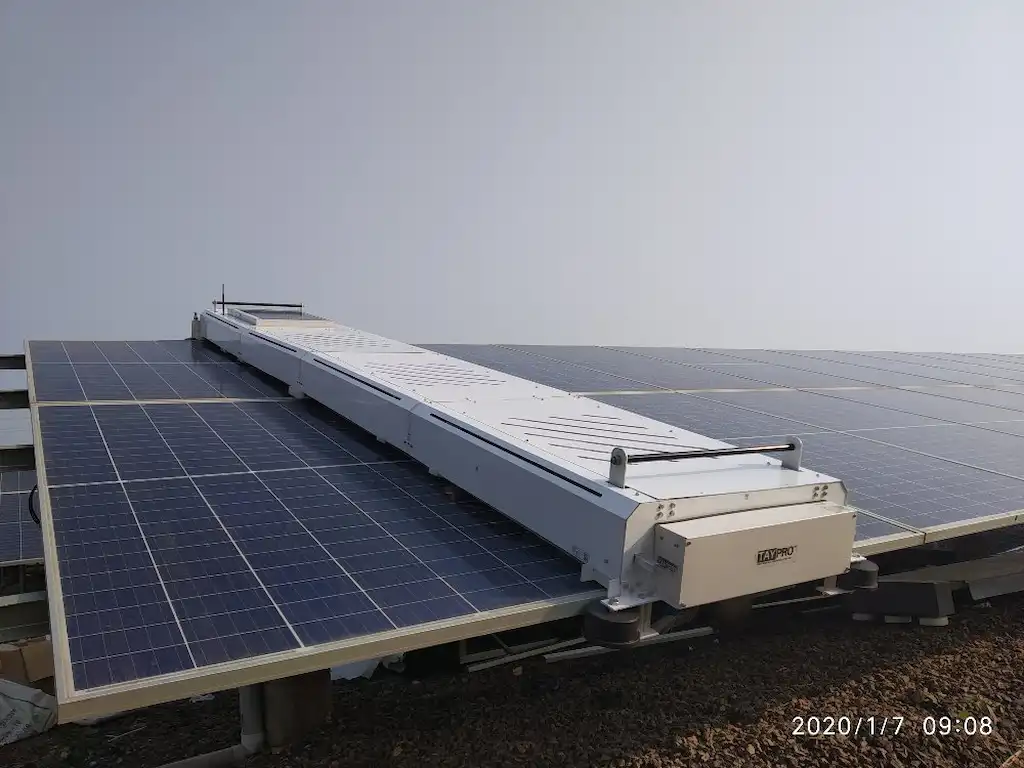
- Ecoppia: Uses solar-powered robots with microfiber cleaning for waterless cleaning, ideal for dry regions.
- Washpanel: Offers portable semi-automatic robots for residential and small-scale systems .
Safety Precautions
Cleaning solar panels, especially on roofs, carries significant risks. Here are key safety tips:
- Always use proper safety gear, including non-slip shoes, harnesses, and ladders with stabilizers.
- Never clean wet or slippery roofs; wait for dry conditions.
- If possible, clean from the ground to avoid climbing.
- Be aware of electrical hazards; even when the system is off, some parts may still be live. Always consult your system’s manual for shutdown procedures.
- According to the CDC, over 100 people in the USA die annually from ladder-related falls, so ensure ladders are stable and have someone on the ground to assist.
If you’re uncomfortable with heights or unsure about safety, hiring a professional is the safest option.
FAQs
How do I know if my roof damage is covered by insurance?
Check your policy for coverage of sudden events like storms or hail; wear and tear or neglect isn’t covered, per the Insurance Information Institute. Contact your insurer or use our tool to draft a claim letter with the right details.
What are automated solar panel cleaning systems, and are they worth it?
Automated systems use robots to clean panels regularly. They are worth considering for large installations or in very dusty environments where manual cleaning is frequent.
How much does it cost to clean solar panels?
DIY cleaning costs are minimal (just water and soap), while professional services typically cost between $150 and $500 for residential systems.
What is the best way to clean solar panels?
Use a soft brush, mild soap, and water. Avoid abrasive materials or high-pressure washers that can damage the panels.
Can I clean my solar panels myself?
Yes, but ensure you take proper safety precautions, especially if accessing the roof. If you’re uncomfortable with heights or unsure about safety, hire a professional.
How often should I clean my solar panels?
Generally, every six months, but it depends on your location and environment. In rainy areas, natural cleaning may suffice, while in dry or dusty areas, more frequent cleaning may be needed.
What is the risk of leaks with new flashing if not installed properly?
Improper installation, like cutting below old lines, can cause leaks within 2 years, so professional work is crucial.
How do you secure a tarp on a roof without nails?
Conclusion
Keeping your solar panels clean is essential for maximizing their efficiency and longevity. Whether you choose to clean them yourself, hire a professional, or invest in an automated cleaning system, following best practices ensures your solar investment continues to pay off. In 2025, advancements in automated cleaning solutions offer a convenient option for maintaining clean panels with minimal effort, especially in dusty regions of the USA. By understanding when, how, and why to clean your solar panels, you can ensure your system operates at peak performance for years to come.



